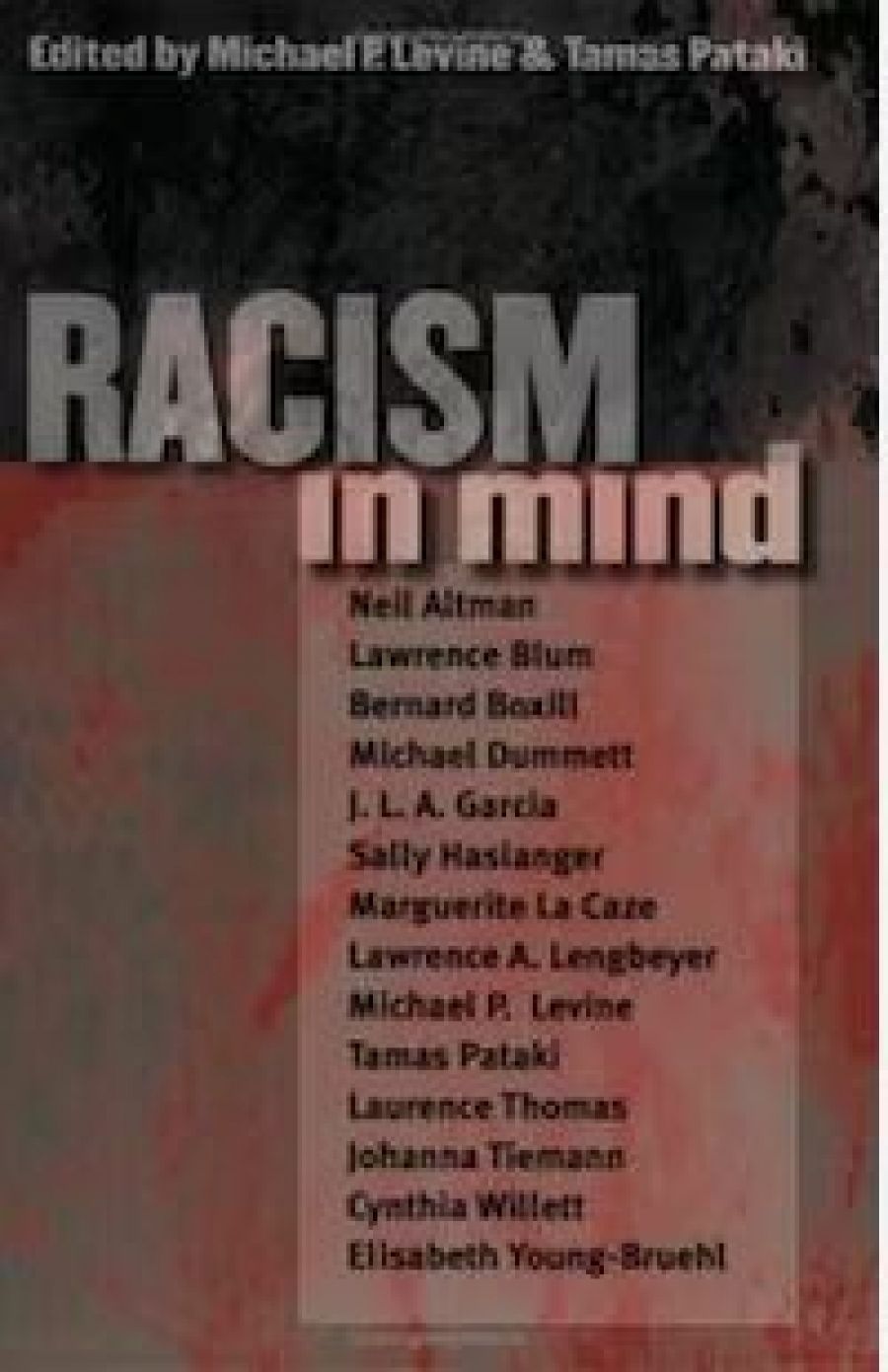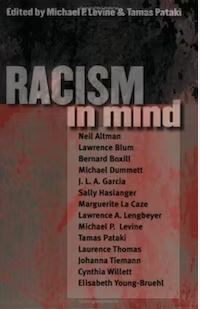
- Free Article: No
- Contents Category: Philosophy
- Custom Article Title: Hydra's Head
- Review Article: Yes
- Article Title: Hydra's Head
- Online Only: No
- Custom Highlight Text:
The anthropologists of some future galactic civilisation, sifting through the remains of human life on earth, will find much to puzzle them, but nothing more so than the propensity of supposedly rational creatures to denigrate, hate or even murder those who are perceived to be different in race. How should we understand racism? Where does it come from, and how can it be eradicated? The editors of this book have assembled an impressive collection of philosophers and psychologists to tackle these questions. Their wide-ranging and often conflicting answers do not make racism less puzzling, but, like all good philosophical investigations, this book has the effect of making the reader puzzle more profoundly.
The editors took a lot of pains with this collection. They ensured that it would be accessible to general readers, as well as scholars. The introduction, by Tamas Pataki, is particularly helpful in providing a framework for the discussion. The editors encouraged contributors to read and comment on each other’s work. The result is a discourse in which participants with different approaches and perspectives cooperate to tackle a matter of serious concern.
- Book 1 Title: Racism in Mind
- Book 1 Biblio: Cornell University Press, US$22.50pb, 313pp
- Book 1 Cover Small (400 x 600):
- Book 1 Cover (800 x 1200):
Should we describe such inequalities as racist? Pataki insists that not everything that goes wrong with race relations should be called ‘racism’. He and many of the other contributors want to reserve the term for those who have ‘racist minds’. But who counts as a racist is far from clear. Should we reserve the term for people who have racist beliefs or hatreds, or can it also apply to those who patronise people of other races or draw attention to racial differences in a discourteous or inappropriate way? Lawrence Blum thinks that the term has acquired too many uses and that we would be better off finding other ways to describe wrongs that can poison racial relationships.
Racial prejudice is resistant to appeals to reason, and racial hatred is out of proportion to any real or imagined cause. Racism seems to emerge from the dark recesses of the psyche, and its causes are a proper subject for psychology. Lawrence Lengbeyer thinks that the persistence of racist beliefs has to do with cognitive complexity and inertia. Beliefs that we want to reject are not automatically eliminated from the mind.
However, most of the psychologists in this volume turn to psychoanalysis for an explanation of racism. Neil Altman and Johanna Tiemann understand racism as a psychic defence: a projection of undesirable impulses onto others. Pataki thinks that it is rooted in envy. Elisabeth Young-Bruehl traces forms taken by group prejudice to different personality disorders. Obsessional people are predisposed to think that out-groups are involved in a conspiracy against them. Hysterics, who bifurcate themselves into a good, chaste self and a bad, lascivious self, project their bad self onto a convenient other. Narcissists aggrandise themselves by demeaning others, a psychological mechanism that often lurks behind sexism. Her analysis is impressive, but how can we know whether it, or any of the other accounts, is the right explanation or simply a likely story?
However they are created, the social and psychological effects of racist minds are horrendous even when they don’t express themselves in violence. Racism makes even the most intelligent people stupid by blinding them to the humanity, talents and suffering of racial others (Bernard Boxill). It encourages people to adopt norms and expectations that have detrimental effects on people from marginalised groups (Laurence Thomas). Even those who are relatively free of racist beliefs assume that leadership positions are ‘naturally’ filled by whites. It distorts our perception of social space (Cynthia Willett). And it makes race, like gender, a mark of identification in ways that people from marginalised groups are not able to control (Marguerite La Caze).
The hope of all of those who contributed to this volume is that an understanding of racism can assist in its eradication. Dummett does not think that our understanding needs to go very deep. The feelings that make a racial group the object of hatred, he thinks, are relatively superficial and do not appear in social environments unfavourable to them. Most of the other authors in this collection disagree – some because they think that nothing will deliver us from the dangers of racism short of dealing with its root causes; others because they see racism as a hydra’s head of evil manifestations. This book leaves us with the question of what social relationships, politics or forms of education are likely to be most effective in combating the racist mind.



Comments powered by CComment